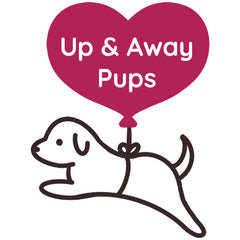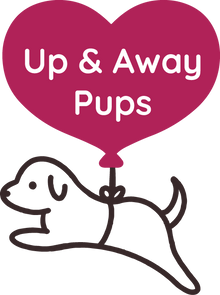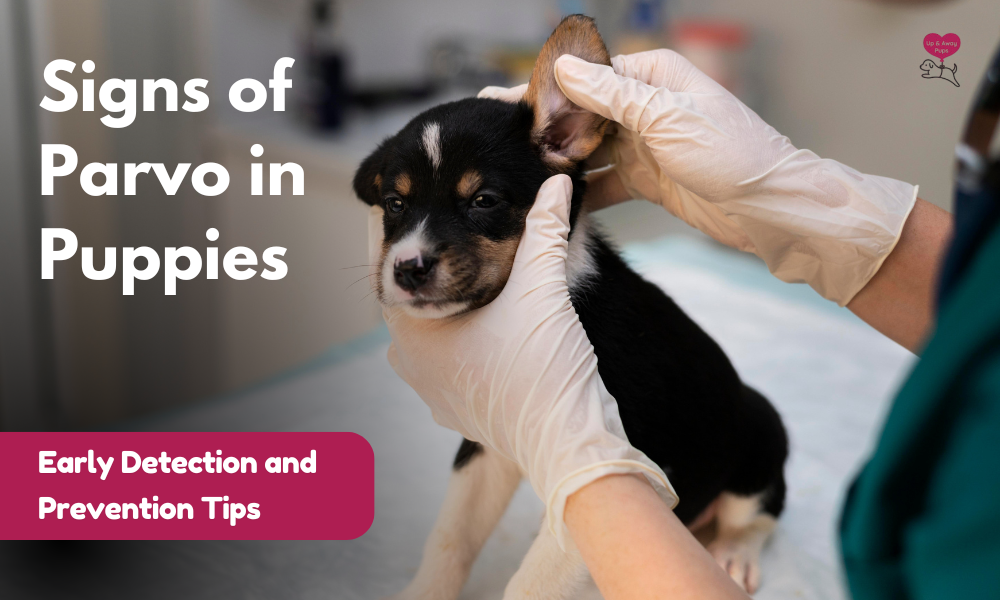Signs of Parvo in Puppies: Early Detection and Prevention Tips
Early detection of parvovirus in puppies is vital to their survival. Common signs include lethargy, loss of appetite, fever, vomiting, diarrhea, dehydration, and behavioral changes. Prompt veterinary care, including hydration, antibiotics, and nutritional support, greatly increases recovery chances. Prevention through timely vaccination, proper sanitation, and cautious socialization is key to protecting puppies from this highly contagious virus. Recognizing symptoms early and seeking immediate treatment can save your puppy’s life.
Parvovirus or parvo is considered one of the highly fatal and more severe diseases impacting the younger dogs as well as the puppies. The virus is extremely contagious and is infamous for its capability of becoming widespread and disrupting the delicate systems in a puppy's body. Aiming towards the gastrointestinal tract and the immune system makes parvo lead to serious symptoms, including diarrhea, vomiting, and dehydration, leading to life-threatening outcomes when not taken care of promptly. The early Signs of Parvo in Puppies and immediate medical interventions are the key to enhancing survival rates and reducing any complications.
While no breed is completely immune to diseases, breeds like Mini Goldendoodles and Cavapoos are generally healthier due to responsible breeding practices that focus on strong genetics and overall vitality
Responsible pet owners should have enough knowledge about the parvovirus. They should focus on the safety of their puppies right from identifying the early signs to the effective preventative measures. Knowledge of ways in which the virus spreads, along with the risk it is associated with, can create a huge effect on safeguarding your furry friend. In our post today, we are going to discuss everything the pet owners should consider about identifying, screening, treating, and preventing this virus from arising. Using the appropriate details, the pet owners can undertake proactive steps to retain the security and health of the pups.
What is Parvovirus?
Parvovirus in dogs is an extremely infectious disease caused by an aggressive virus that mainly affects the younger dogs and the puppies. The virus grows in spaces where the pups come in direct contact with contaminated areas, infected feces, and indirect carriers such as clothing, hands, and shoes. It spreads rapidly and remains resistant to major disinfectants, enabling it to grow across surfaces for months.
The virus impacts growth by breaking down cells, which is why it seriously affects the intestinal lining, immune system, and bone marrow. Puppies today are at greater risk due to their still-developing immune systems, which are not as strong as those of adult dogs to ward off this potential pathogen. Infected dogs often shed this virus into their feces for a couple of weeks, even once their symptoms subside, contributing to its contagious profile.
Specific factors, including overcrowded living conditions, lack of sanitation, and lack of vaccinations, notably elevate the chances of parvo outbreaks. Puppies often do not complete vaccination schedules and are generally at risk. Knowing how parvo spreads and why it is a serious threat to puppies, pet owners should take proactive steps to restrict their exposure and minimize their vulnerabilities.
Some pet owners may also encounter skin-related conditions in dogs, such as dog hives, which are often allergic reactions unrelated to parvo. Being vigilant about your dog’s overall health can help identify signs of illness early, whether it’s parvo or a less severe condition like hives.
Early Signs of Parvo in Puppies
Identifying the early Signs of Parvo in Puppies remains essential for those in search of on-time vet care as the puppies often start revealing the signs in just three to seven days following the exposure with the symptoms that rapidly progress. Understanding the things to look out for can help in shielding the life of the pup as follows:
Lethargy and Weakness
The puppies who are specifically infected with the parvo might appear sluggish and tired. They often sleep more than usual, which leads to a lack of energy, and they appear disinterested in the activities that generally excite them, like eating, playing, and greeting their pet owners. The fatigue frequently marks the initiation stages of this infection while the virus immediately starts depleting the energy levels of the puppy and attacking their immune systems. Weakness starts manifesting physically while the puppies often grapple with standing, walking, or maintaining their general body shape.
Loss of Appetite
One of the highly initial changes to the behaviors of puppies affected by parvo is a complete or sudden loss of appetite. These puppies often refrain from eating their best treats or food, which is given to puppies with a lot of appetite in their developing phases. The lack of interest in food coincides with the overall feeling of malaise and gastrointestinal discomfort caused by this virus.

Fever
The increased temperature of the pup's body is yet another remarkable symptom of parvo while the body of the puppy tries warding off the infection. However, fever is often not instantly visible with the lack of thermometer use; gentle Signs of Parvo in Puppies, like warm ears, excessive painting, or drying out of their nose, indicate a fever. The changes in the body temperature range from normal fever to hypothermia in serious conditions, preventing the diseases from progressing.
Vomiting
The frequent signs of vomiting are the most noticeable and concerning signs of this issue. At first, vomiting appears yellow or clear; however, as the infection worsens, it becomes like bile or frothy. Vomiting causes notable discomfort and contributes to increased dehydration, leading to fatalities in cases such as parvo. Persistent vomiting, mainly when combined with the other symptoms, needs prompt medical attention.
Also Read: Understanding Canine Mental Health: Recognizing and Treating Anxiety in Dogs
Diarrhea
Diarrhea forms the hallmark sign of parvo that develops right after the beginning stages of vomiting. Their stool becomes watery, foul-smelling, or contains traces of mucus or blood. It is the ideal condition leading to serious loss of fluid, imbalances with the body's electrolytes, and the worsened condition of dehydration. Puppies suffering from parvo often strain during defecating, and their weakened condition makes things more challenging for them to recover instead of intervening.
Abdominal Pain and Discomfort
Parvo leads to notable damage or inflammation to the intestinal lining, which can cause abdominal pain. Puppies often show visible Signs of Parvo in Puppies of discomfort, such as whining, hunching over, or crying, when touched around the stomach area. They may also adapt to unusual postures that effectively relieve pain, like curling up tightly or lying flat on their side. Their reluctance to frequently change positions or move indicates that they are experiencing a lot of discomfort.
Dehydration
Dehydration is often an intricate concern with parvo disease, which develops rapidly due to diarrhea and vomiting. Symptoms of dehydration include sunken eyes, dry gums, and minimized skin elasticity. A simple test consists of gently pinching the skin at the backside of the puppy's neck. When the skin fails to return to normal, it indicates that the puppy is suffering from dehydration. The puppies often consume less water or refuse it completely, worsening the issue.
Depression and Behavioral Changes
Parvo would often make the puppies withdrawn, irritable, and completely quiet. Such behavioral changes are often associated with physical symptoms while the puppy is feeling unwell or becoming overwhelmed due to this infection. The pet owners would often find that their puppy is avoiding all kinds of interactions while isolating themselves or showcasing the sudden fluctuations in their body temperature.
Gum and Tongue Discoloration
Screening the gums and tongues offers more health-related Signs of Parvo in puppies. Due to lack of circulation and dehydration, puppies suffering from parvo develop gray, pale, and bluish gums or tongues. The healthier gums are often moist and pink, and the notable deviation from this normal becomes a major concern.
How Parvo is Diagnosed
The vets often depend on distinctive diagnostic tests confirming the presence of parvovirus infections as the symptoms are often identical to the other sorts of illnesses. The fecal ELISA test is the commonly used method that has the potential to identify parvo in the stool of the puppies. The test offers notable outcomes in a matter of minutes, enabling for a quick screening. But, there are chances for false negatives to happen, mainly when the test is performed earlier on in the infection's time.
Proper blood tests and the ELISA test can also evaluate the puppy's overall health. Such tests often show lower counts of white blood cells, a common sign of parvo. Electrolyte imbalances or dehydration can also be used to determine the seriousness of the condition. Highly advanced imaging systems, including ultrasounds or X-rays, are often used to assess intestinal damage or identify any issues, including blockages.
The cost of parvo diagnosis often varies, depending on the vet and the distinctive tests needed. Although the testing is often expensive, the cost is often less than the price involved in treating serious cases of parvo. Getting the right diagnosis promptly is integral, as any delays would notably reduce the chances of survival.
Treatment Options for Parvo
Hospitalization and Isolation
The initial step in treating parvo in puppies is hospitalization, while infected pups require intensive care and continuous monitoring. Vet clinics offer isolated spaces that help prevent the extremely contagious virus from spreading to other animals. Isolation even ensures that the pup receives the individualized attention and care that are integral to recovery.
Intravenous (IV) Fluids
The emergency involved with treating pups for parvo is fighting dehydration, which often arises due to persistent diarrhea and vomiting. IV fluids are often administered to rehydrate the pups, restore their body's loss of electrolytes, and boost their blood circulation. The fluids often consist of core nutrients and minerals to support the pups' weakened bodies effectively. In numerous instances, the combination of subcutaneous and IV fluids is often utilized, depending on the seriousness of the dehydration.
Antibiotics
Since antibiotics often lack the potential to kill parvovirus, they form an integral part of the treatment. The virus often disrupts the intestinal lining, putting the puppy at greater risk of secondary bacterial infections. A massive array of antibiotics is often administered to prevent and treat such infections, minimizing the vulnerability of complications, including sepsis. Without the use of antibiotics, the chances of fatal bacterial infections are on the rise.

Anti-nausea and Anti-Diarrheal Medications
Medications often help in bringing vomiting and diarrhea under control, playing an integral part in treating parvo. The persistent issues with diarrhea and vomiting can negatively impact dehydration, making it tougher for the pups to retain their body's nutrients. The anti-nausea medications such as metoclopramide or maropitant aid in reducing the mount of vomiting with anti-diarrheal medications that include include the management of the excessive output of stool. Such treatments offer more stability and comfort that enables the body of the pups to aim towards recovery.
Pain Management
Pups with parvo diseases frequently experience notable pain in their abdominal pain that happens due to gastrointestinal inflammation. The effectiveness of the pain relief medications at times gets prescribed for soothing out this discomfort to ensure they stay in more comfort during the entire treatment period. The pain relief aids in reducing the stress that weakens the pup's immune system whenever left unattended.
Nutritional Support
The restoration of the nutrients is the key to helping with the recovery of the pups. However, due to the seriousness of the gastrointestinal damage, the puppies often fail to eat or even digest food. In several instances, the vets might administer the nutrients into the pup's body through the feeding tubes and the IV drips. After the condition of the pup comes under control, the bland and easy-to-digest diet is often introduced, like boiled rice or chicken or the specifically formulated vet diets. Eventually, restoring the general diet is important to help them regain strength and boost their immunity.
Monitoring and Follow-Up Care
The parvo treatment continues even after the pup is discharged from the hospital. Routine follow-up care is essential to ensure complete recovery and prevent relapse. To track their progress, routine inspections, stool tests, and blood tests are often needed. Pups who recover from the parvo often need a couple of weeks of rest, an ideal diet, and closer observation right at home. Eventually, and with the proper guidance of the vet, they are often introduced to their normal activities.
Survival Rates with Treatment
With early treatment, the survival rates for parvo-infected puppies range from 70 to 90%. The possibility of recovery relies on several factors, including the puppy's overall age, health, and how fast the treatment starts. Puppies who get instant care often recover completely and start living healthier lives. However, different untreated cases have significantly lower survival rates, which highlights the essence of vet care at the initial symptom of illness.
Also Read: How to Treat and Prevent Burned Dog Paws: Essential Tips for Dog Owners
Preventing Parvo in Puppies
Prevention of the parvo involves a proactive approach, while the virtual is extremely contagious and persistent. Following these key preventative strategies can help minimize the risk of infection in puppies:
Vaccination
Vaccination is one potential way to safeguard your pup from parvo. Puppies should get their initial vaccine between six and eight weeks of age, which is often followed by boosters every three to four weeks until they are about sixteen weeks old. Adult dogs should also get routine booster shots to maintain their immunity. Delaying or skipping the vaccinations leaves your pups at a greater risk of this fatal virus.
Sanitation
It is important to keep the environment around your pup cleaner for the prevention of parvo. The bedding, surfaces, and feeding places should be disinfected regularly with a solution without potentially killing the virus, including the diluted bleach. Enabling your pup to come into direct contact with the feces, evenif it involves the vaccinated dog, then parvo may exist in its air-borne form.
Socialization Caution
It is important to socialize your pups with other dogs; however, it is also important to take effective measures to prevent your pup from being exposed to parvo. Restrict contact with areas like dog parks, unvaccinated dogs, and kennels until the puppies have been vaccinated. Arrange playdates with healthier and vaccinated dogs, ensuring a safer space for your pup to start interacting and learning.
Conclusion
Parvovirus is often a growing threat among puppies. However, pet owners need to stay equipped with the proper knowledge and effective steps to shield their furry companions against this evolving threat. Routines such as identifying the early Signs of Parvo in Puppies, opting for prompt vet care, and following effective vaccination remain important to help protect your pup's health. It is also important to have a cleaner space and maintain proper caution while socializing to reduce the impact of this infection.


